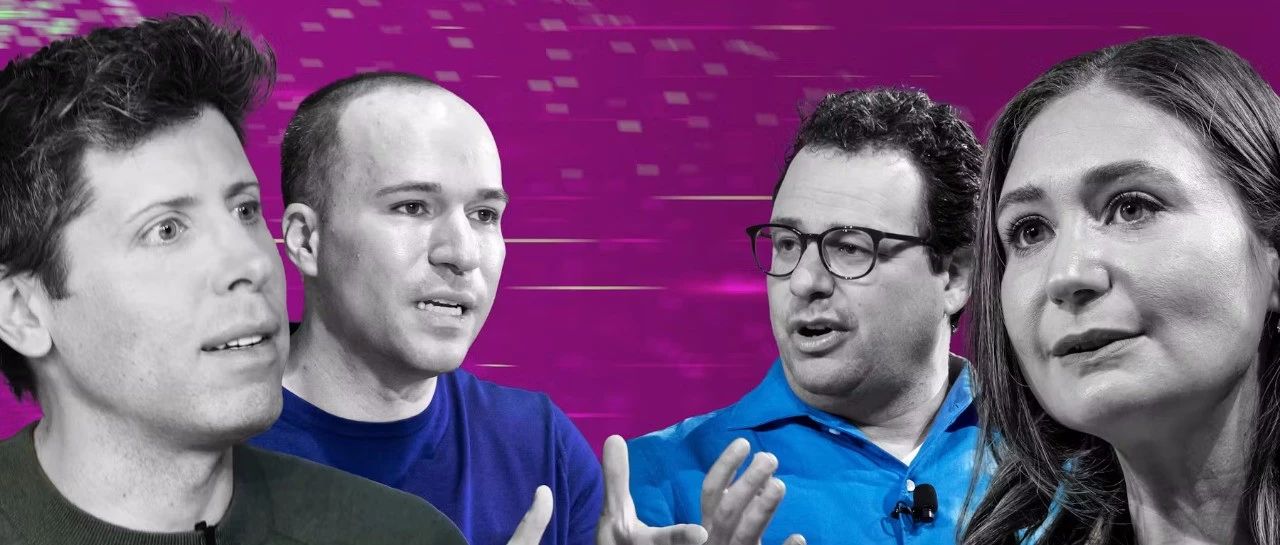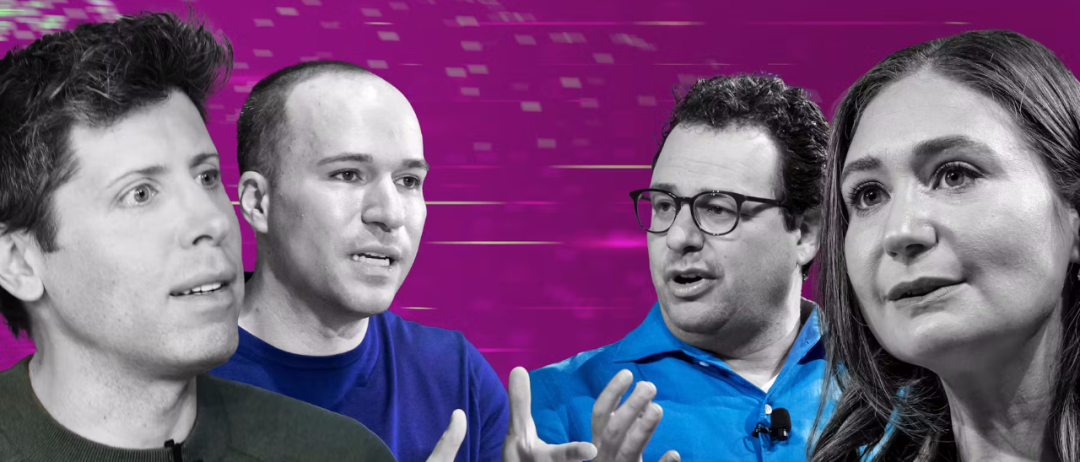
New Zhiyuan reporting editor: Peach. So sleepy. [New Zhiyuan lead] In just three years of establishment, Anthropic with a valuation of 18 billion US dollars is seizing the market share of OpenAI at a lightning-fast pace. In the past three months, their programming revenue has increased tenfold, and they have also snatched the hottest Cursor. The executives of OpenAI are completely on edge! OpenAI has many competitors closely following, but no one can make the executives of OpenAI lose sleep like Anthropic. Once upon a time, AI programming was not only an advantageous field of OpenAI but also one of the main reasons why millions of users subscribed to ChatGPT. However, in July this year, the star startup Cursor, which received an investment of 8 million US dollars from OpenAI, resolutely replaced the default model of its AI programming assistant from GPT to Claude.
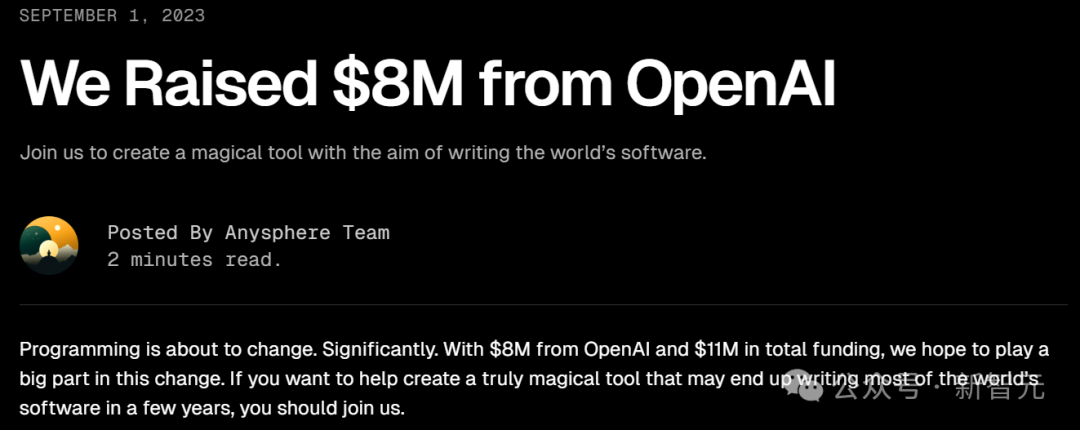
Not only that, the co-founder Aman Sanger even highly praised anthropic on Lex Fridman’s October podcast: “Thanks to a deeper understanding of user needs, the latest version of Claude 3.5 Sonnet can be said to be the current ‘best’ programming tool.”
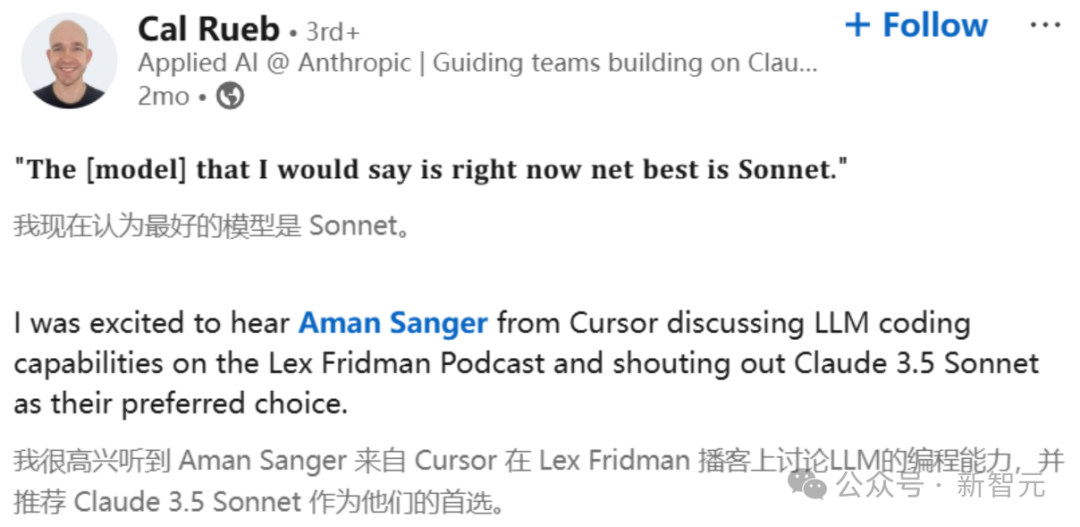
Coincidentally, OpenAI also discovered through internal benchmark tests in early autumn that its own model had been left far behind by Anthropic in automatic programming tasks. All of this shocked OpenAI’s leadership.
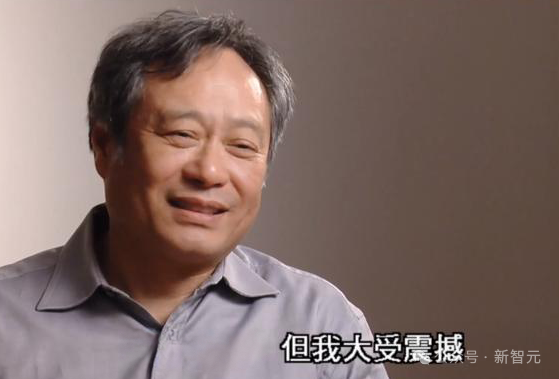
Eyeing the success of Anthropic in the programming field, it is rapidly translating into business results – in the past nearly 3 months, the annualized revenue of the company from software development and code generation business has achieved a 10-fold growth. In order to contain this momentum, OpenAI has begun to urgently enhance the programming capabilities of its own model.
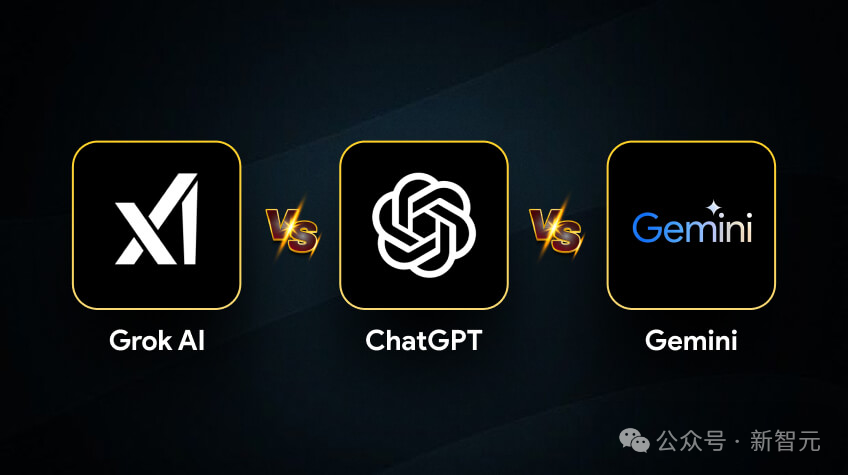
OpenAI needs to be vigilant not only against Anthropic, but also against Google which just released Gemini 2.0 and xAI which created the world’s strongest supercomputer. However, OpenAI, which was established five years earlier than Anthropic, still maintains a significant advantage in revenue: OpenAI is expected to generate about $400 billion in revenue this year, which is more than five times that of Anthropic. In terms of scale, OpenAI also far exceeds Anthropic: OpenAI has raised a total of $200 billion in funds and has a maximum valuation of $157 billion, while Anthropic’s financing amount is $11 billion and the maximum valuation is $18 billion. In terms of financial status, OpenAI is also more advantageous: The profit-sharing ratio between OpenAI and cloud provider Microsoft is lower than that between Anthropic and Amazon. Due to the extremely high cost of developing and operating AI technology, both OpenAI and Anthropic are burning money on a large scale this year, with the scale reaching billions of dollars. In addition, OpenAI also plans to develop its own data center chips and other hardware facilities to reduce its dependence on external suppliers. This means that the company still needs to continuously seek financial support in the foreseeable future.
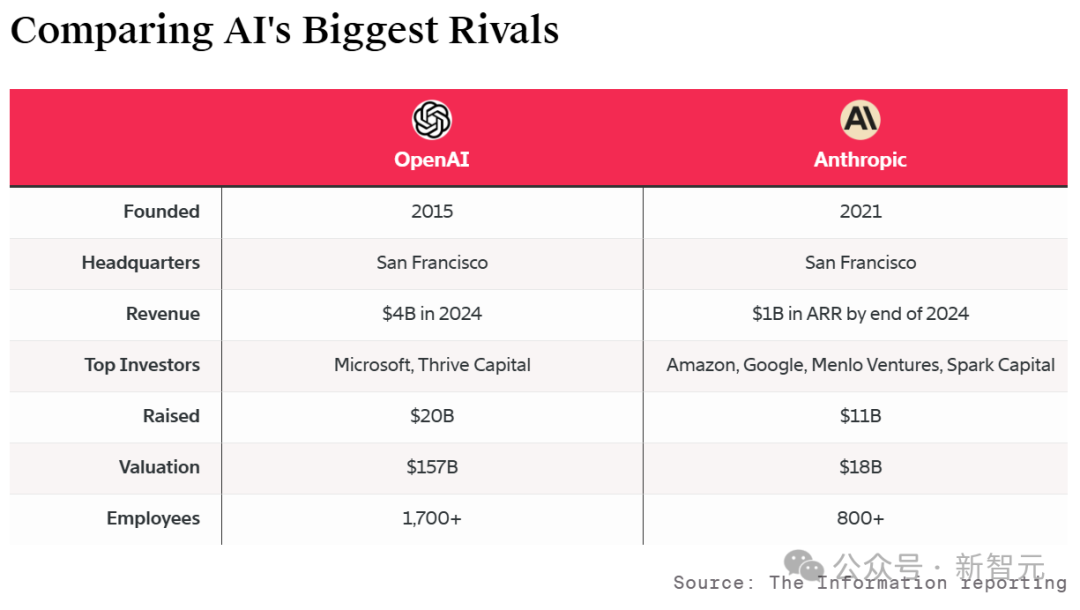
In past development, Anthropic has always maintained a self-restraint: a high emphasis on safety. Here, “safety” refers to that AI companies take measures to prevent major model failures or behaviors that endanger human life – such as independently developing biological weapons or carrying out nuclear strikes. (It does not include that the company actively provides the model for use by the US military.)

Anthropic’s 7 co-founders have all served at OpenAI. However, due to concerns about AI safety, they chose to leave at the end of 2020. According to Anthropic CEO Dario Amodei, the company had developed an AI chatbot as early as the summer of 2022, but they chose to continue safety testing instead of rushing to release it. In November 2022, OpenAI released ChatGPT, which instantly caused a sensation in the industry and among the public. Four months later, Anthropic launched their Claude.
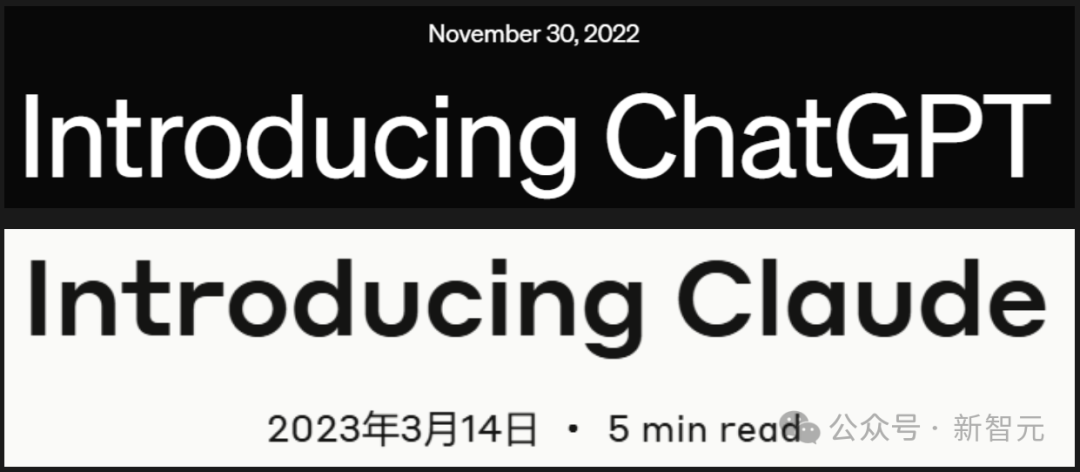
Recently, Anthropic has become increasingly bold in challenging the giant OpenAI. In October of this year, after many executives including the Chief Technology Officer Mira Murati left OpenAI, Anthropic placed advertisements for Claude AI at San Francisco International Airport and taunted, “This is a choice without drama.” In terms of the release of experimental products, it has also become more decisive. In October, although the company admitted in its blog that there were potential cybersecurity risks, it still launched an innovative feature – Computer Use. That is, enabling the Claude model to operate computers like humans. It can not only view the screen, move the cursor, but also click buttons and type text!

This move triggered ridicule within OpenAI. At a recent meeting, OpenAI’s leadership taunted Anthropic’s decision, believing that it was contrary to their highly publicized AI safety concept. Another grudge behind the founders. In fact, the enmity between Anthropic and OpenAI is much more complicated than what is known outside. Before parting ways due to differences in AI safety concepts, the contradictions between the founders had already taken root. As the vice president of research at OpenAI, Dario Amodei once led the development of the GPT-2 and GPT-3 models. Moreover, he also joined forces with researchers from OpenAI, Google DeepMind, etc. to jointly write a pioneering paper on reinforcement learning based on human feedback (RLHF).
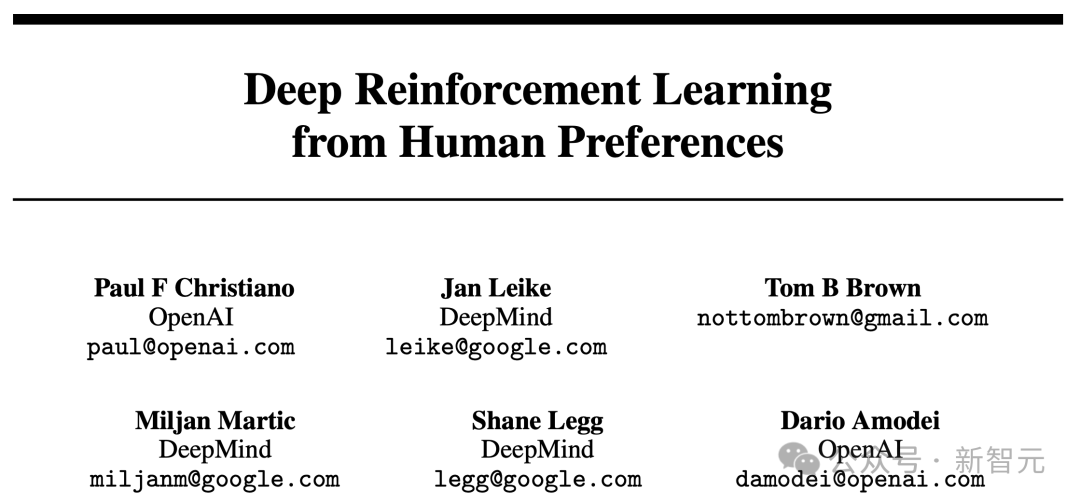
Paper address: https://arxiv.org/pdf/1706.03741 This breakthrough technology has greatly promoted the progress of conversational AI, enabling humans to directly participate in the optimization and improvement of AI models. It is reported that during their tenure, Dario and Daniela Amodei had serious disagreements with other executives. In particular, there were disputes with Altman and Greg over project leadership and security issues.
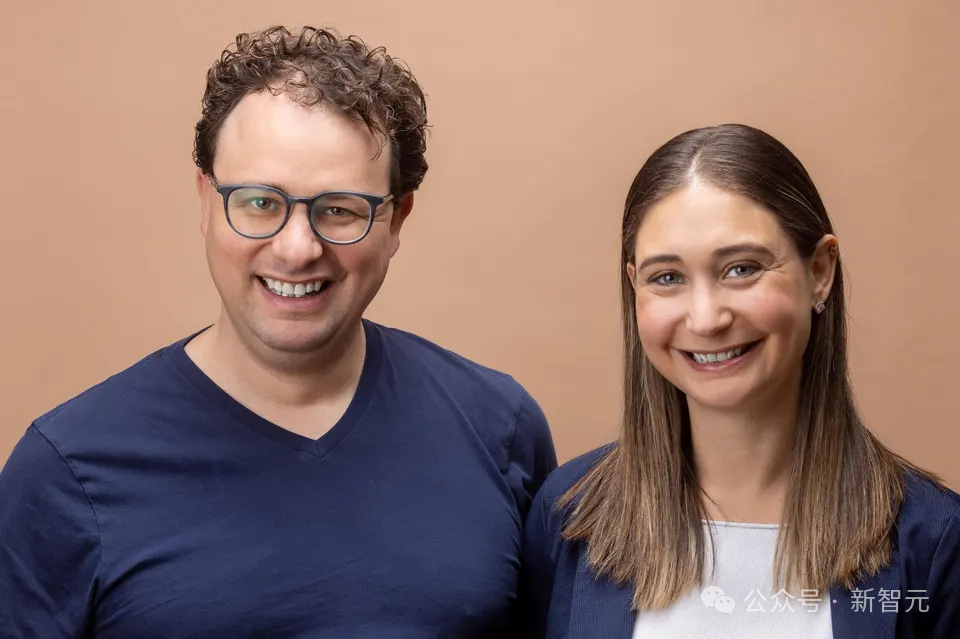
Left: Dario Amodei; Right: Daniela Amodei (Dario’s sister and president of Anthropic). At the beginning of 2019, a seemingly ordinary project application became the fuse that led to division later. At that time, Greg was leading the development of an AI project that could play the online battle game Dota 2. Subsequently, he hoped to join the language generation GPT model team led by Dario Amodei.
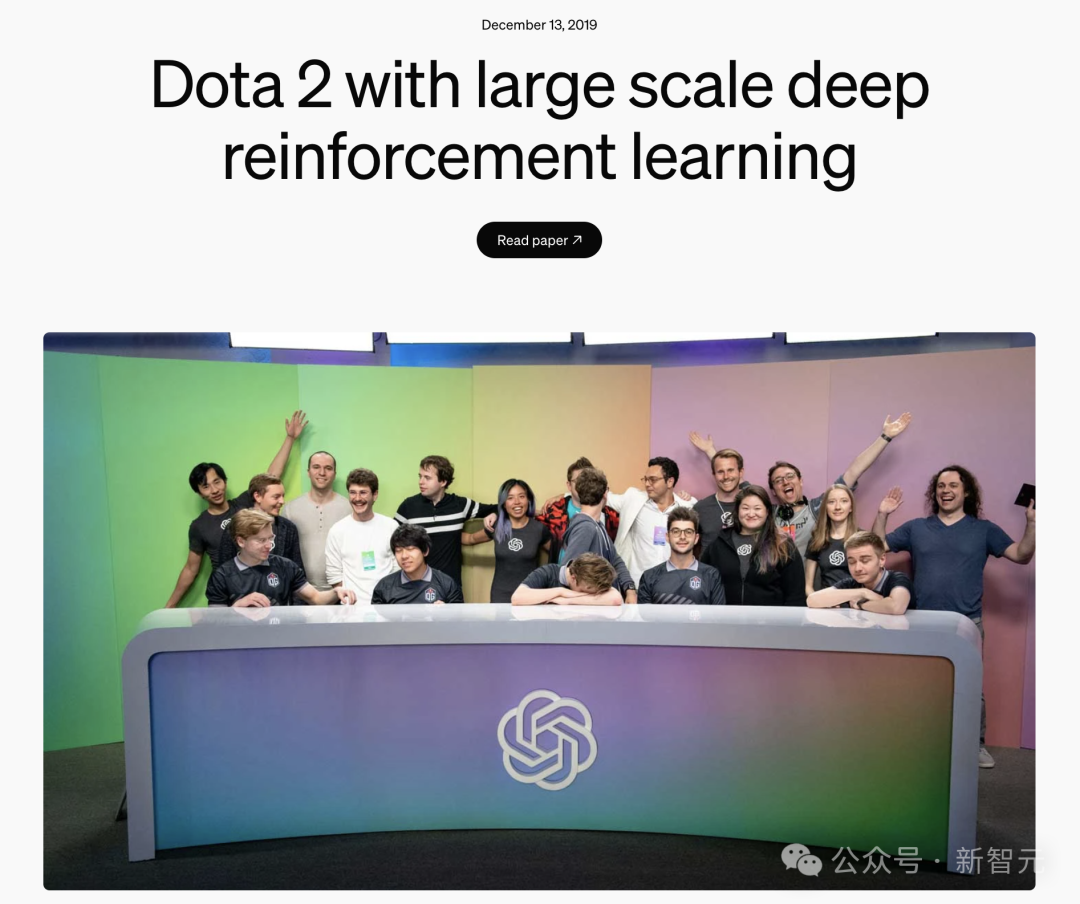
This model later became the basic technology of best-selling products such as ChatGPT. Surprisingly, the Amodei siblings directly rejected Greg’s request to join the project. They explained to other employees that Greg had a reputation for being difficult to cooperate with and often modified the code at will without communication. Then, the degree of the escalation of the contradiction was astonishing. According to a former OpenAI employee, in the months before their resignation, the rift between the Amodei siblings and other members of OpenAI deepened day by day. Amodei even created a private Slack discussion group that only specific researchers could enter and directly excluded company executives such as Altman and Greg. This almost schismatic behavior foreshadowed the inevitable division of the team. In a podcast episode in November this year, Dario Amodei made a meaningful statement when talking about this experience. He frankly admitted that the final parting was due to different fundamental concepts of AI safety development. “If you have your own ideas about achieving goals, you should pursue and achieve them. Trying to persuade others to change their minds is extremely inefficient.” Eventually, the Amodei siblings chose to leave OpenAI and founded Anthropic. Since then, Greg has also participated in the GPT project. Information has counted the list of all members who have left OpenAI and joined Anthropic, including founding partners and the person in charge of the security project and other big shots as well as the joining of ordinary researchers.Not including the Amodei siblings, there are also 8 OpenAI employees who have defected one after another.
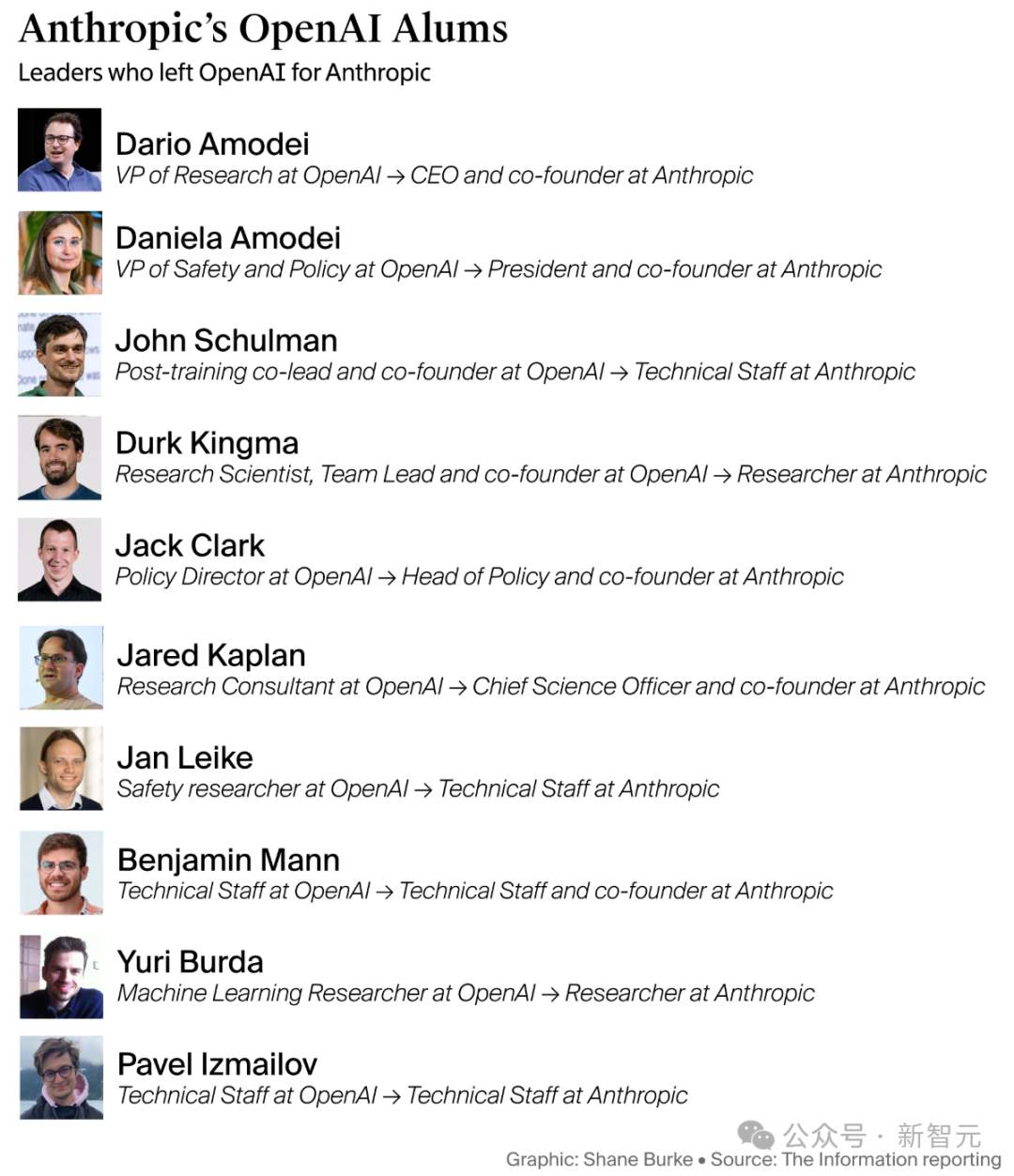
Business ace: No fancy skills, just focus. Founded in 2021, Anthropic took 2 years to enter people’s field of vision. There are subtle differences in the development focus between it and OpenAI. To a certain extent, this also explains why Anthropic can make steady progress in the commercial customer market. ChatGPT, which was born and became popular in advance, has innate advantages in user favor. The usage volume of Claude is much lower than that of ChatGPT, which is reasonable. Therefore, Anthropic has shifted the research focus to how to promote the Claude model more effectively to enterprise customers and developers. Different from OpenAI’s pursuit of multimodal and complex reasoning models, Anthropic has chosen a more stable path. In the view of Anthropic’s leadership, “These seemingly simple functions can actually change the whole game.” Not only that, Jensen of Anthropic also pointed out that most enterprises are currently committed to integrating AI technology into existing products. This requires the support of functions such as larger context. Although these functions do not sound cool enough, they can bring substantial changes. Such as text summarization, content generation and intelligent customer service. In addition, the low usage rate of ChatGPT users for reasoning models also seems to support this judgment. It can be seen that Anthropic’s company strategy is very clear, and more resources will be invested in solving the real pain points of enterprises. In view of this, they focus on the following aspects:
- Expand the context window to enable AI models to handle larger-scale information to answer questions
- Ensure that its models can interface with external tools such as databases and application programming interfaces
- Assist enterprises in developing applications that can integrate real-time proprietary information.
The battle of large models. Claude’s breakout has proved that this practical strategy has a huge market prospect. Heavyweight customers such as the cloud collaboration startup Airtable and the legal research company LexisNexis have begun to adopt Claude on a large scale.

Airtable’s Chief Executive Officer Howie Liu stated that Claude’s expanded context window enables employees to upload complete sales call records, and the AI model can more accurately capture subtle tones and details such as customer complaints in conversations. What is more interesting is that Liu believes that Claude’s responses have more “humanized” characteristics than other LLM. This subtle difference may be the key to winning in enterprise applications. However, he also mentioned that Airtable has also evaluated OpenAI’s models before and is still using these models in other application scenarios. In the legal field, LexisNexis is also an important customer. Its Chief Technology Officer Jeff Reihl revealed that about 60% of the company’s AI functions use Claude, mainly for drafting and analyzing legal documents. Similarly, Claude’s expanded context window plays a key role in it. He also added that the remaining functions use open source models such as OpenAI’s GPT-4 and Mistral AI. In addition, the most eye-catching case comes from the customer service company Intercom. In October 2023, Intercom announced that it would switch the underlying technology of its customer service work order processing AI chatbot Fin from the OpenAI large model to Claude. And the data tells everything. Claude has increased the automatic solution rate of customer service work orders to 51% without additional adjustment of the model.
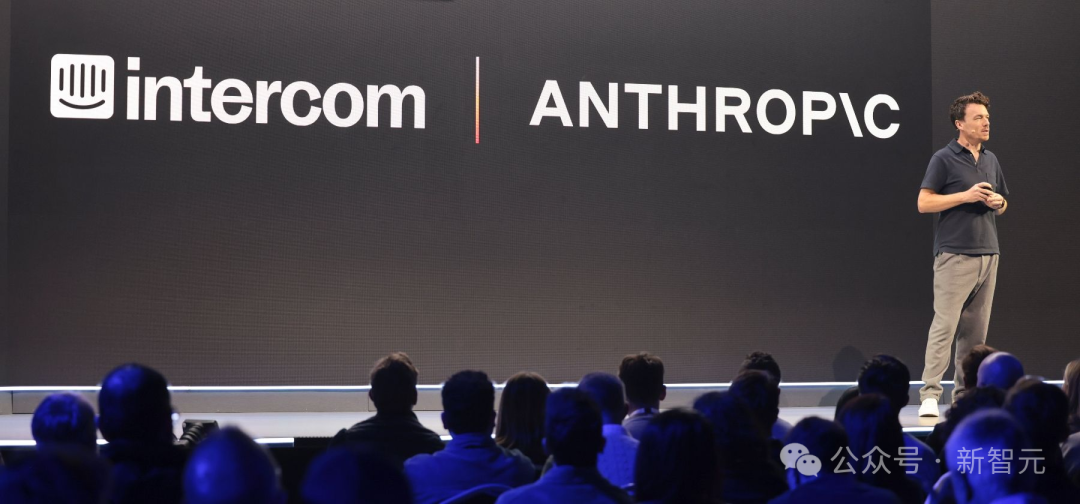
In contrast, the work order resolution rate of Fin, which was first launched in March 2023 and driven by the OpenAI model, is only 23%. This significant improvement may not only be due to the replacement of the model, but also be affected by other factors. However, for enterprises pursuing efficiency, this is undoubtedly an exciting breakthrough. It is worth mentioning that Anthropic also announced that it will adopt Fin as its customer service AI agent. In addition, in terms of coding automation, Anthropic has a significant advantage over OpenAI. This summer, Anthropic quietly handed in a remarkable performance report card. With the release of Claude 3.5 Sonnet, this company quickly rose to the top in the code automation field.
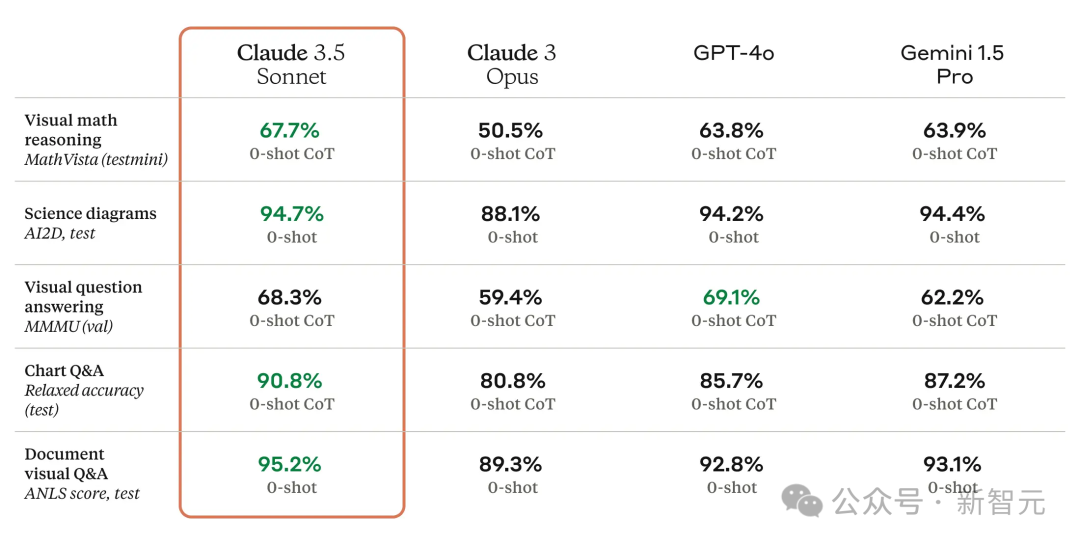
A start-up programming assistance tool company, Augment CEO Scott Dietzen said bluntly that before the summer of 2023, they only used open source models to develop products. They stated that after the release of Claude 3.5 Sonnet, its performance far exceeded all models including OpenAI. Especially, in scenarios that require deep understanding and complex reasoning, this advantage was particularly obvious. Another code assistance tool company, Sourcegraph, also chose Claude 3.5 Sonnet as its default model. Their data was more intuitive: users had 66% of the time preferred Anthropic’s models rather than being inclined to other products such as OpenAI and Google. Moreover, at the GitHub annual conference, even Microsoft, OpenAI’s most important partner, also officially announced the addition of Claude and Gemini models in the GitHub Copilot programming assistant.
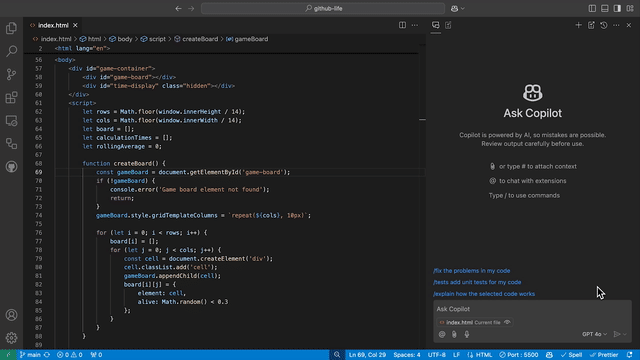
Very rarely discussing rivals in public, Ultraman admitted in an activity a month ago that there is no doubt that they (Anthropic) have developed a model that performs outstandingly in the programming field. This work is impressive. Tense, the moment of Anthropic’s counterattack. In recent days, various signs indicate that Anthropic has begun to take an active offensive strategy against OpenAI. The size of the company’s sales team has increased by an astonishing 500% compared to the same period last year. At the same time, the marketing strategy of the sales team has also undergone a major transformation. Behind this is a carefully planned market counterattack. According to a person who witnessed it, at the beginning of the year, the sales team of Anthropic was relatively low-key. They frankly told customers that most developers were using models of competitors such as OpenAI and only emphasized the cost and performance advantages of Claude in specific scenarios such as customized model development. By June this year, with the release of the new version of the Claude model, the company’s sales strategy became more clear. The sales team took the initiative to attack and emphasized to customers that Claude had surpassed OpenAI in many technical iterations within the year and focused on showing its excellent average results in multiple authoritative AI benchmark tests. Moreover, they have also received the recognition of many big shots and developers in the industry. The evaluation of Aravind Srinivas, the CEO of Perplexity, is the most wonderful. He believes that “Claude 3.5 Sonnet is a major breakthrough, which is not only of great significance to Perplexity but also has a profound impact on many products in the entire market.”What is more worthy of mention is that Srinivas further emphasized that “this model has achieved a qualitative leap in logical reasoning ability.” Although the Claude 3.5 super-large cup does not know when it will be launched, Anthropic is constantly refreshing and breaking through boundaries with technological strength. Chase OpenAI and become the next OpenAI. Reference materials: https://www.theinformation.com/articles/how-anthropic-got-inside-openais-head
